Check out these 13 tips I use to get tack sharp and dazzling photos of ducks. No matter where you are photographing ducks, you can use these tips. Plus bonus videos and more camera tips.
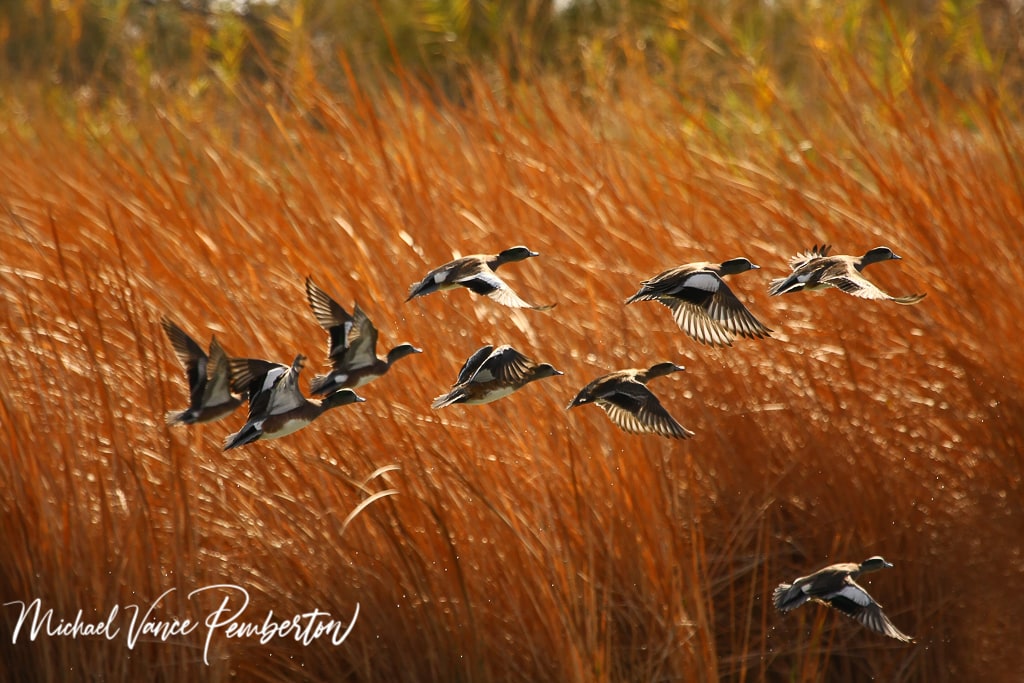
- Look for the light.
- Proper exposure technic.
- Reflections.
- Study their movement and prepare for take-off.
- Check the wind forecast.
- Conceal yourself.
- Show the surroundings.
- Look for the unusual.
- Location, Location, Location.
- Know migration patterns.
- Take a lot of scouting trips.
- Act fast.
- Check your background.
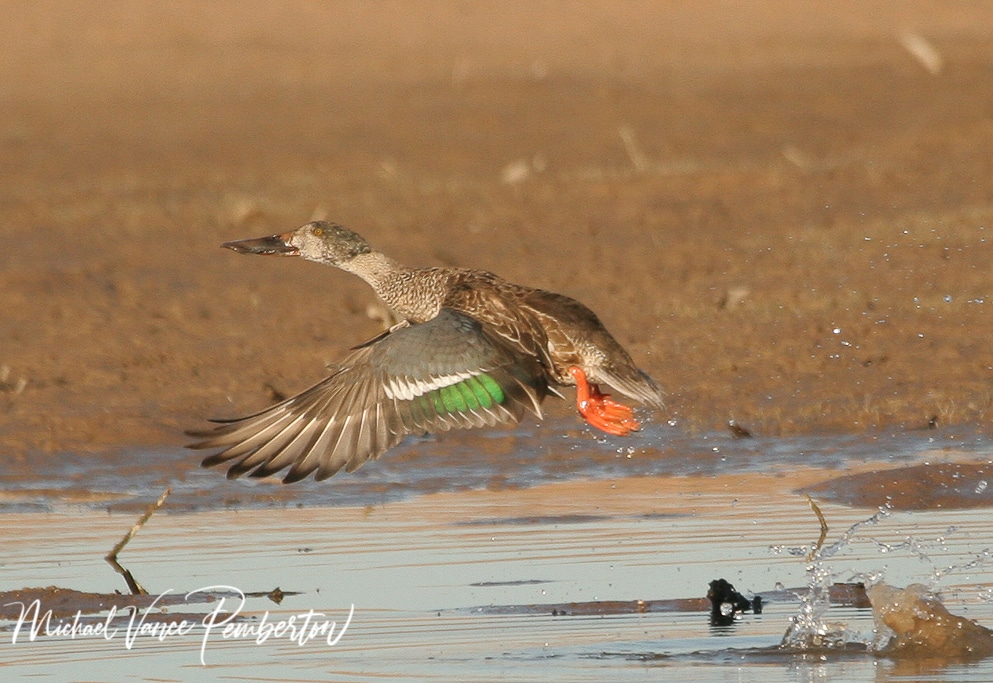
Look for the light when photographing ducks.
Look for the light. What does that mean? One of the most important things to keep in mind when photographing ducks is. Not only do you need great light to show off the beauty of ducks, but you need really bright light to help stop the duck’s action so you can get sharp images of ducks in flight. You will need fast shutter speeds to stop the duck’s fight to get sharp tack photos. Bright sunlight helps with that. Early morning and right before sunset is always my favorite time to go out. If you can go out on a clear day, that is even better. A slightly overcast day is the best day because a cloudy day helps filter and softens the light, making for a beautiful shot.
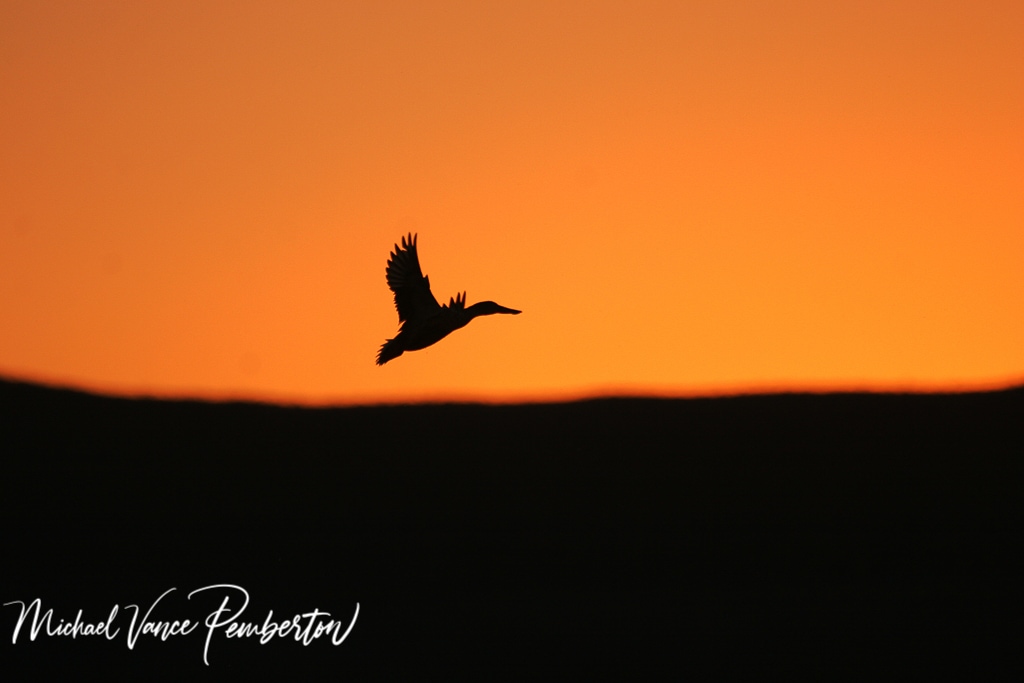
Proper exposure technic.
I suggest you preset your exposure setting to spot meter our automatic exposure before you leave to go to your location. Depending on the situation, I like to bump up one-stop increments to either side plus or negative of the meter when I am on site. If it’s a slightly cloudy day, I will bump it up one-stop to the positive. The opposite if it is really sunny, I will bump it one stop to the negative. Take a look at your histogram to see if you need to make changes.
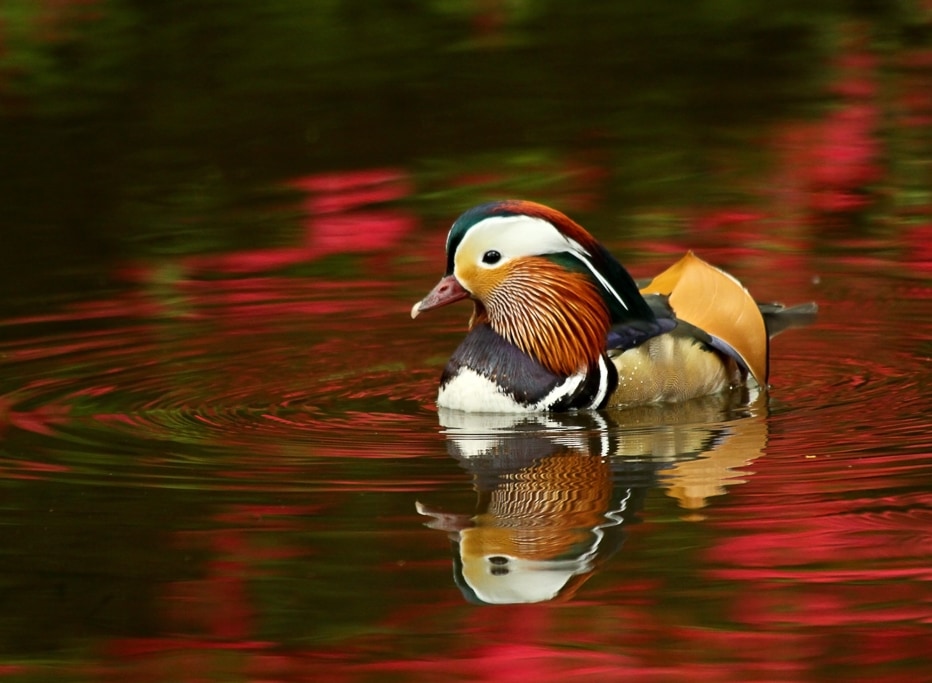
Reflections.
Some of my favorite photos of ducks are when you can capture ducks’ beauty in their reflections in the water. Ducks are some of the most colorful birds on the planet. Try using an f-stop between 5.6 – 8 will help with the depth of field to get the reflection and the duck to be sharp. Try different f-stops to see what you like.

Study their movement and prepare for take-off.
It is essential to know the duck’s behaviors because they all have different things they do before they take to flight. Buffle heads like to twitch their heads serval times before they start running on the water before they take flight. Ducks like the American Wigeon can do something I have never seen another duck do. Which are pop straight up into the air, and no running start is needed to take flight. It is so amazing to see them take flight. It’s like watching a helicopter take flight but imagine jet engines for power, not blades. There are so fast from water to flight!
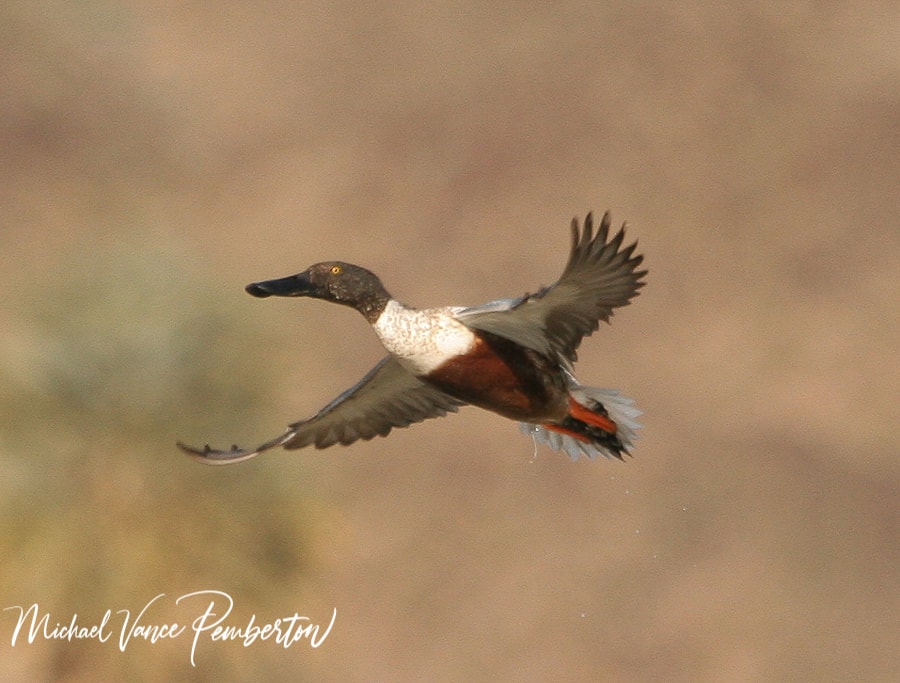
Check the wind forecast.
Over the years, I have discovered now matter when you go to photograph ducks; rather, it’s the southern desert of California or the woodlands in Arkansas, ducks do not like the wind. Their behavior makes it seem like there nervous, so they don’t take flight much. Ducks often take flight into the wind and land against the wind like most birds do. If your lucky and go out early in the morning with a prevailing east wind, you can get some great flight shots because the sun will be behind you.
Conceal yourself.
This one should be obvious. Ducks’ eyes can see things both and near at the same time. Imagine that so you had better have on proper clothing and, if possible, be in a duck blind. You can purchase a mobile hunting blind like the Ameristep Tent Chair Blind more info. Always prepare to be wet.
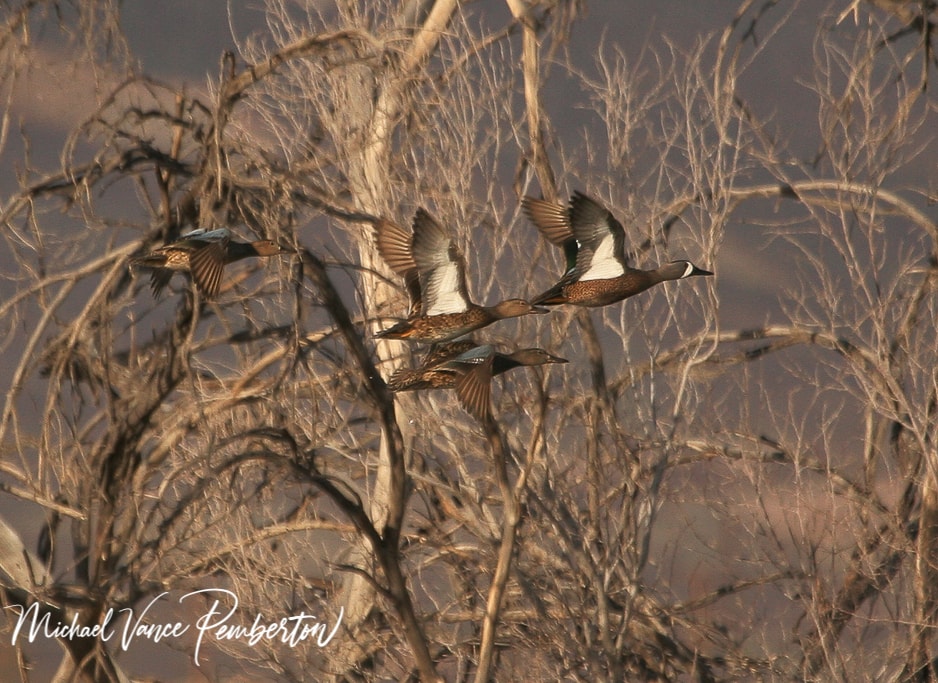
Show the surroundings.
One of the many things to keep in mind is to show the surroundings you photographing the ducks in. They can be so beautiful, which adds so much more to your shots. Try to anticipate where the ducks will fly in front of you and prepare your image to capture what’s behind them. Don’t just go for close-ups of the ducks.
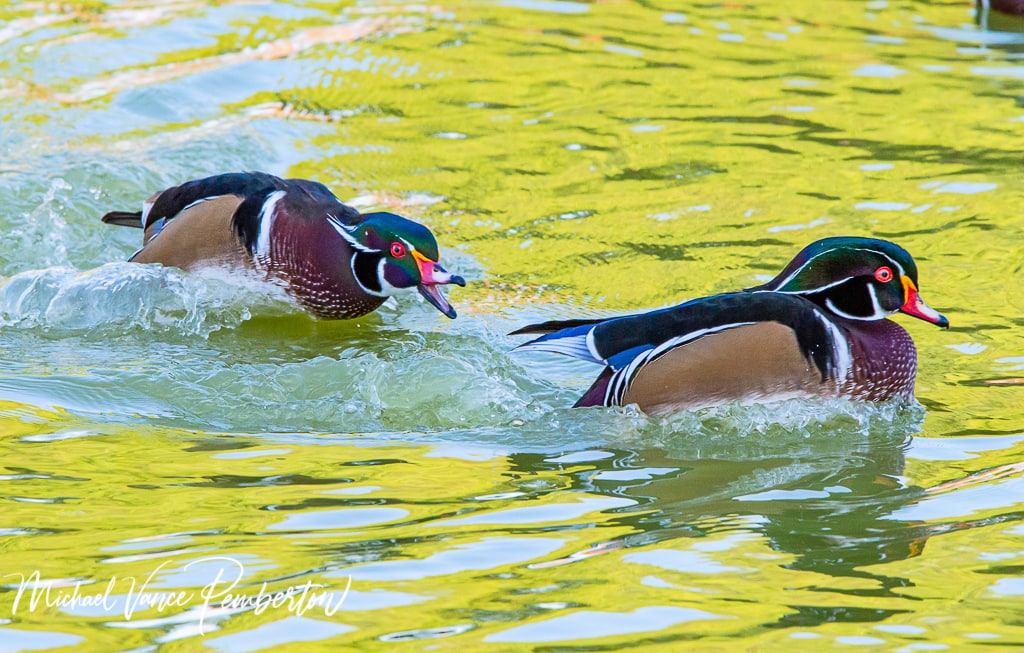
Look for the unusual.
When I can find something like a yellow construction net reflecting in the water, that can make for an unusual but beautiful shot. There are so many things you can look for when out photographing ducks. The image below is not a duck, but the buildings reflecting in the water make for a great shot, I think. So keep that in mind when you are out to take pictures.
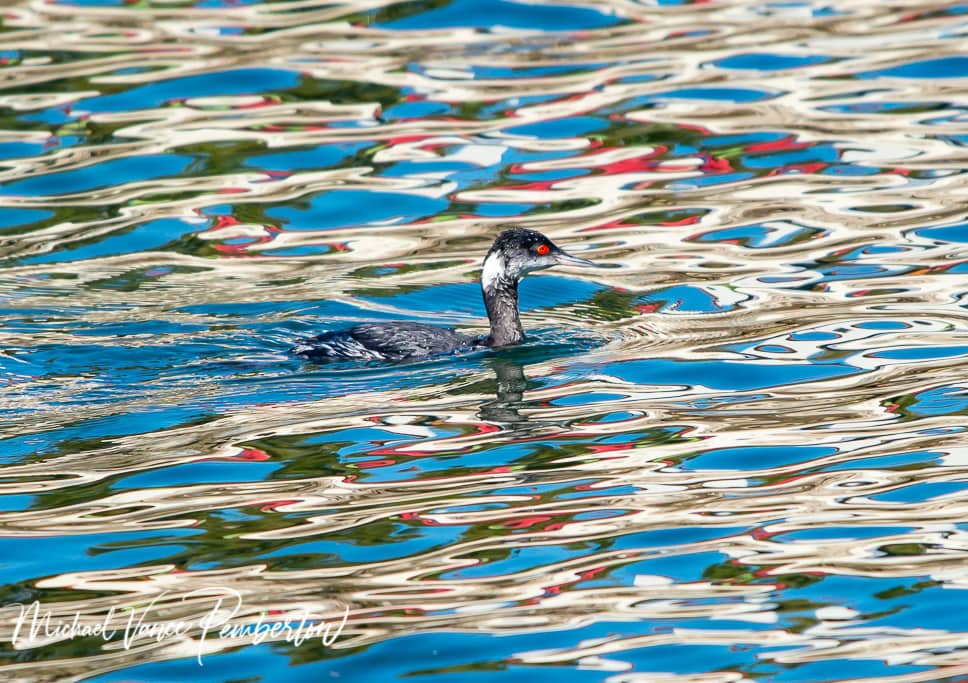
Location, Location, Location.
We all have heard this many times before, but it’s true. Go out to your local parks or find a national wildlife refuge that’s close to you. Lakes are a must to check out. Just get out and find your locations to take your duck photos.

Know migration patterns.
The best time to go out to photograph ducks is in the early spring and fall. They will be migrating back and forth during those times in the year. They use flyways that they follow, like the Mississippi flyway and the Pacific Flyway. You can check out websites like Ducks Unlimted to learn more.

Take a lot of scouting trips.
I love this part the most there’s nothing better than discovering a new place to photograph ducks. I spent 10 years camped out in southern California in the desert next to the Colorado River. It was an incredible experience! Most days, I would go out to find new locations. I would ask around to see what information I could find from people who have camped there for over 20 years or more. I was told about a small pond where a lot of ducks have been spotted for years. It’s maintained by the American Canal workers. The location of the sun in the morning during the wintertime was perfect. It would come up right behind me. The Cattail reeds would reflect on the water during the winter and the reflection from the reeds would turn the water golden like the photo above. So take the time to get out there and find those new spots you never know what you will see.
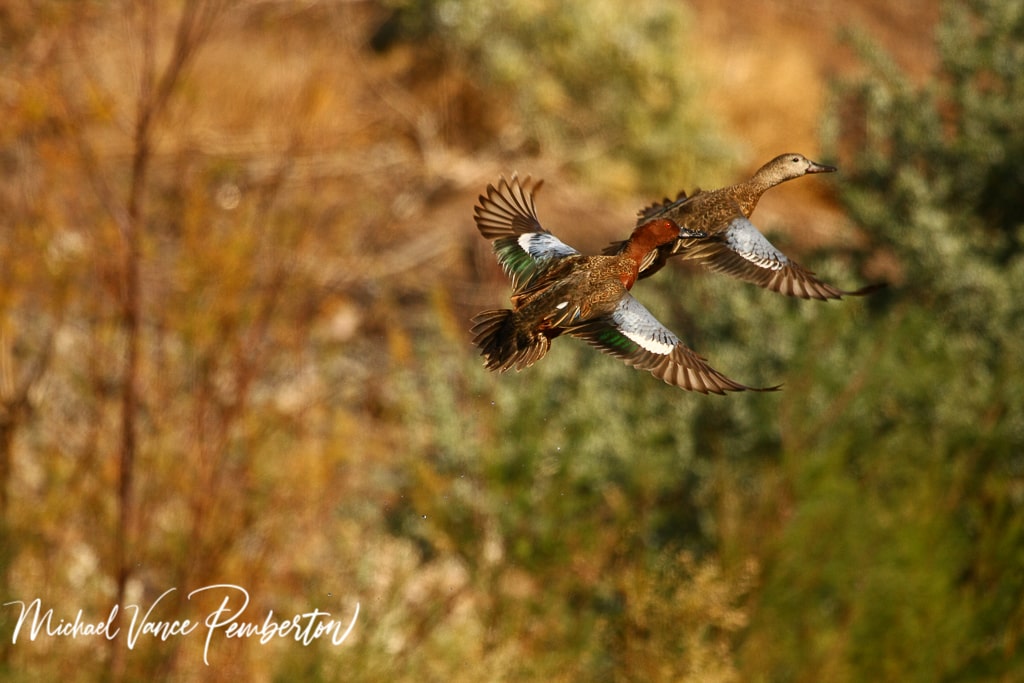
Act Fast.
Ducks can fly as fast as 60 mph. When they start coming in for a landing, you better act quickly to get your shot of them in flight. Pan a little ahead of the ducks, let them come into view, then press your shutter release. Always prepare for the quick take off from the water.
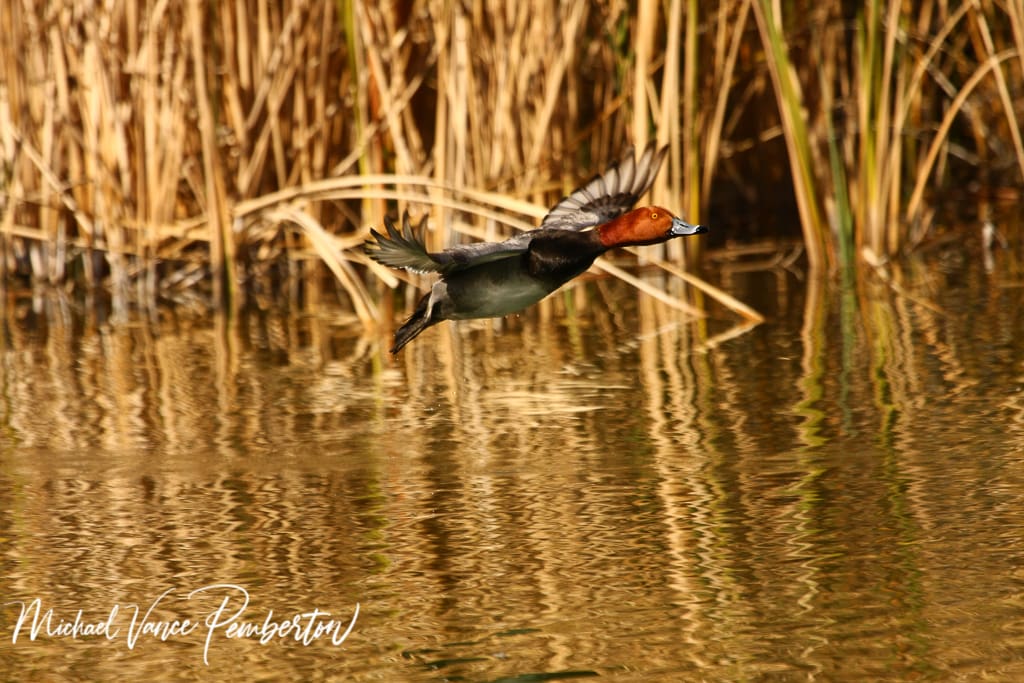
Check your background.
Have a lousy background can destroy a beautiful image. Beware what’s behind the ducks if you see a distraction move if possible if you think it won’t disturb the ducks.
Bonus Knowledge.
I would use an f-stop of F/5.6 or F/8.0 if you would like to have more depth of field. To stop the action, use a shutter speed of 1/1000th of a second or faster.
By Michael Vance Pemberton


Recent Posts
In shadows cast by love's deceitful guise,He wandered blind, his heart the captive prize.Through realms unknown, where truth remained concealed,He followed trails of falsehood, unrevealed. Blinded...
Prepare to be amazed as the MCAS Cherry Point Air Show returns on May 11-12. This annual event, hosted by the Marine Corps Air Station (MCAS) Cherry Point in North Carolina, promises a weekend of...